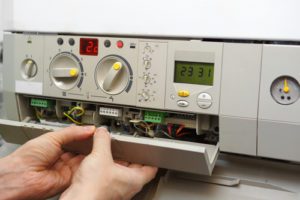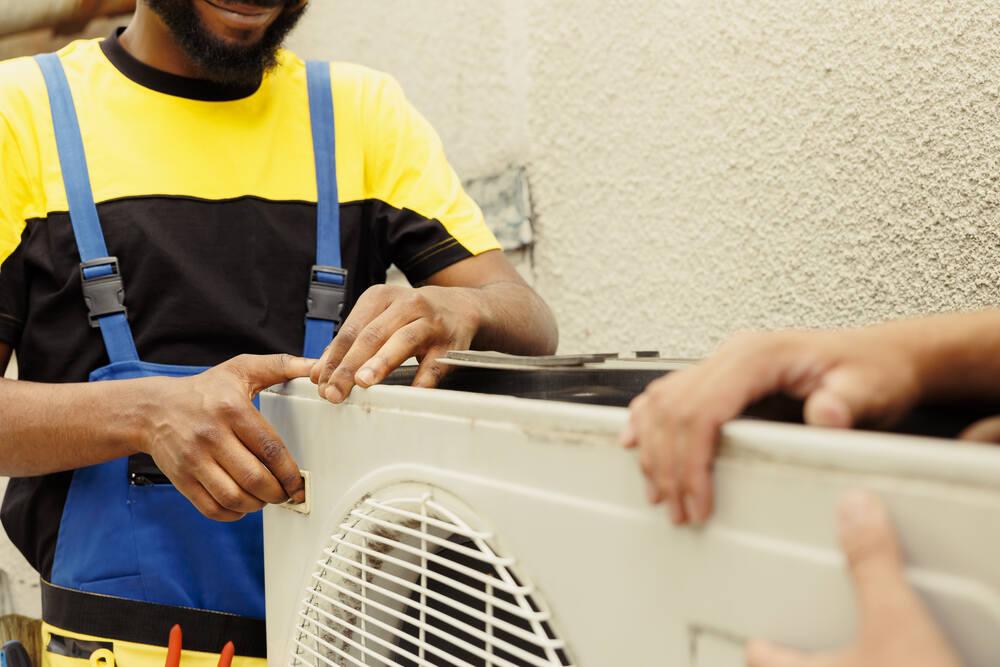The gas furnace is designed to convert natural gas into heat and distribute the warmth throughout your home. An investment in a high-efficiency gas furnace is a long-term venture that will eventually pay for itself. The efficiency of central furnaces is measured by annual fuel utilization efficiency (AFUE). Apart from saving money for homeowners , high efficiency gas furnaces produce steadier heat than older furnaces and are more environmentally friendly as they emit far less pollution.
 What you Should Know About The Gas Furnace
What you Should Know About The Gas Furnace
With the advances in technology , today’s gas furnaces are safer than ever before. Furnaces come with fail-safes for any foreseeable electrical malfunctions, gas leaks and other fire hazards. Once properly installed and maintained by professional service technicians the probability of fire is minimal. Although the technology now used in gas furnaces has been around for a while ,in the past , homeowners looking to protect their homes and families had to have these features installed independently , which could be stressful. Over time , the design evolved to what is now regarded as industry standards in terms of safety. Consequently homeowners rarely have to worry about the furnace causing damage ,or even loss , to property or loved ones.
The absence of a standing pilot is a significant difference between the modern central furnace and it’s predecessors. In older furnaces, a standing pilot needed to be on at all times, with gas furnaces it only needs to be on for the length of time that the heating cycle takes to compete. This is not only improvement in efficiency but also safety, a pilot that is perpetually lit increases the risk of danger. Three other innovations that make a new furnace a safer option are listed below.
Fan and Limit Switch
The fan and limit switch in a furnace can either be bundled together or come separately. The function the same regardless, the work together to regulate the temperature to avoid overheating. The fan switch controls when the blower motor turns on and off, while the limit switch keeps the furnace from overheating by shutting the gas valve when the temperature that connects air handler to the ducts becomes too high.
Flame Detector
The flame detector does exactly what it sounds like, it uses sensors determine whether or not there is a flame. With no flame to burn it , gas can leak into the home, the flame detector sends a signal to the control board to activate a safety lockout that stops the flow of gas.
Air Pressure Switch
The air pressure switch ensures gas is venting properly via the draft inducer. The draft inducer is meant to assist combustion gases in safely venting away from the home, but if airflow becomes reduced for any reason, the air pressure switch shuts off the gas.
For more information on how you can stay warm this winter contact Valley Comfort Heating and Air Conditioning. Our expert technicians will help you with all furnace upgrades and repairs.
FAQ Section: Modern Gas Furnace Safety and Efficiency
1. Why is investing in a high-efficiency gas furnace beneficial?
Investing in a high-efficiency gas furnace is a long-term money saver. These furnaces boast higher AFUE (Annual Fuel Utilization Efficiency) ratings, meaning they use less fuel to produce heat. Over time, the savings on energy bills can offset the initial installation costs. Plus, they reduce carbon emissions, making them environmentally friendly.
2. How does AFUE impact a gas furnace’s performance?
The AFUE rating determines how much fuel is converted into heat by a furnace. A 90% AFUE rating means 90% of the fuel is used for heating, with only 10% wasted. Modern furnaces can reach AFUE ratings of up to 98%, drastically reducing waste and saving on heating costs compared to older models.
3. What safety features are present in modern gas furnaces?
Modern gas furnaces come equipped with advanced safety mechanisms like flame detectors, air pressure switches, and fan/limit switches. These features work together to prevent overheating, gas leaks, and improper venting, making today’s furnaces far safer than older versions, which often required manual installation of safety features.
4. How does the absence of a standing pilot improve furnace safety?
Older furnaces required a standing pilot light to remain lit constantly, posing a gas leak risk. Modern furnaces use electronic ignition, which only lights the pilot during heating cycles. This reduces gas consumption and significantly enhances safety by minimizing the risk of accidents caused by a continuously lit pilot.
5. How does a fan and limit switch protect a gas furnace from overheating?
The fan and limit switch is designed to regulate a furnace’s internal temperature. The fan switch controls when the blower turns on and off, while the limit switch shuts off the gas valve if the temperature exceeds safe limits. Together, they prevent the furnace from overheating, ensuring it runs safely and efficiently.
6. What is the purpose of the flame detector in a gas furnace?
The flame detector is a crucial safety feature that ensures a flame is present when gas is being burned. If no flame is detected, the furnace shuts down the gas supply to prevent leaks. This system reduces the risk of gas accumulation in your home, which could lead to dangerous situations.
7. How does an air pressure switch improve furnace safety?
The air pressure switch ensures that combustion gases are properly vented out of your home. If there is restricted airflow or improper venting, the switch shuts off the gas to prevent dangerous gases from accumulating. This feature is critical for maintaining safe indoor air quality.
8. How can a high-efficiency gas furnace improve home comfort?
High-efficiency gas furnaces provide more consistent and even heat, reducing temperature fluctuations within your home. They also operate more quietly and are often equipped with variable-speed fans that improve airflow, enhancing your home’s overall comfort during colder months.
9. How often should I have my gas furnace serviced?
It’s recommended to have your gas furnace inspected and serviced at least once a year. Regular maintenance ensures the furnace runs efficiently, reduces the risk of breakdowns, and prolongs its lifespan. A professional technician can spot potential issues like faulty sensors or gas leaks before they become serious problems.
10. Are modern gas furnaces more eco-friendly?
Yes, modern gas furnaces are much more environmentally friendly compared to older models. Their high efficiency reduces fuel consumption and, in turn, greenhouse gas emissions. By choosing a furnace with a high AFUE rating, you’re not only cutting energy costs but also contributing to a cleaner environment.



